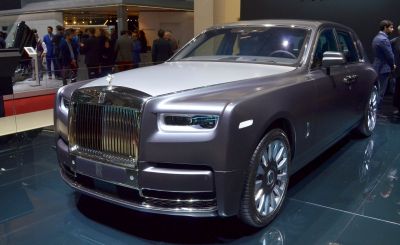 1953 DeSoto Powermaster Six 8-Passenger Dimensions, Size & Specs
1953 DeSoto Powermaster Six 8-Passenger Dimensions, Size & Specs
Measurements of the 1953 DeSoto Powermaster Six 8-Passenger, engineered for optimal performance and comfort
| Dimensions | |
|---|---|
| Length: | 5699 mm224.4 in18.7 ft |
| Width: | 1963 mm77.3 in6.4 ft |
| Height: | 1620 mm63.8 in5.3 ft |
The DeSoto Powermaster Six 8-Passenger, produced between 1952 and 1953, is a classic full-size sedan that embodies the automotive style and spacious design typical of early 1950s American cars. This particular generation of the Powermaster was designed to comfortably accommodate up to eight passengers, making it a practical choice for families or group travel during its era. The car measures an impressive 5699 mm (224.4 inches) in length, providing ample passenger and cargo space. With a width of 1963 mm (77.3 inches), the Powermaster Six offers a broad and stable footprint on the road, contributing to its comfortable ride quality and commanding presence. Standing at 1620 mm (63.8 inches) in height, the sedan's profile is balanced and proportional, reflecting the styling trends of the early 1950s that favored roomy and accessible interiors without excessive height. The combination of these dimensions categorizes the Powermaster Six as a large sedan, characteristic of the post-war American automotive market where size and passenger capacity were key selling points. The Powermaster Six was equipped with a robust inline six-cylinder engine, which, paired with its substantial size, provided reliable and smooth performance for its class. Its large size compared to contemporary vehicles made it a standout choice for those needing space without opting for the even larger luxury or limousine offerings of the time. Measuring approximately 5.7 meters in length, nearly 2 meters across, and over 1.6 meters tall, this DeSoto remains an iconic example of full-size American sedans from the early 1950s, combining classic styling with practical passenger capacity and comfortable dimensions.
Discover the standout features that make the 1953 DeSoto Powermaster Six 8-Passenger a leader in its class
Have a question? Please check our knowledgebase first.
The 1953 DeSoto Powermaster Six 8-Passenger sedan measures 5699 mm (224.3 inches) in length, 1963 mm (77.3 inches) in width, and 1620 mm (63.8 inches) in height. These dimensions provide a spacious eight-passenger interior typical of large sedans of the early 1950s, offering ample room for passengers and luggage.
With a width of 1963 mm (77.3 inches), the 1953 DeSoto Powermaster Six 8-Passenger is wider than many contemporary compact and midsize sedans, which commonly measure between 1800 mm and 1900 mm (71 to 75 inches). This generous width contributes to a roomy cabin and stable road presence but might require more attention when navigating narrow city streets or parking spots.
The Powermaster Six 8-Passenger stands 1620 mm (63.8 inches) tall, which was fairly typical for large sedans from the early 1950s. This height allows for sufficient headroom inside the cabin while maintaining balanced proportions and aerodynamic considerations for its time. Modern sedans may have slightly varying heights depending on design trends and safety requirements.
Based on its external dimensions—5699 mm (224.3 inches) long and 1963 mm (77.3 inches) wide—the Powermaster Six 8-Passenger was designed to comfortably seat eight passengers, a feature less common in modern sedans. The spacious cabin layout prioritized passenger legroom and seating capacity, making it ideal for families or group transport. However, exact interior volume figures were not commonly published in that era but can be inferred from its generous exterior dimensions.
Standard residential garages in many regions typically measure around 6 meters (19.7 feet) in depth and approximately 3 meters (9.8 feet) in width. With a length of 5699 mm (224.3 inches or about 18.7 feet) and width of 1963 mm (77.3 inches or about 6.4 feet), the Powermaster Six 8-Passenger will generally fit inside a single-car garage in terms of length and width, but owners should measure their specific garage dimensions. Additionally, height clearance should be checked to ensure comfortable entry and exit.
While the exact curb weight for the Powermaster Six 8-Passenger sedan is not widely documented, sedans of this size and era typically weighed between 1600 kg and 1800 kg (around 3500 to 4000 lbs). This substantial mass contributed to a sturdy ride with good road presence but also influenced fuel consumption and handling characteristics, as vehicles then lacked many modern weight-saving technologies.
Compared to the earlier DeSoto Powermaster models produced before 1952, the 1953 Powermaster Six 8-Passenger featured updated styling but maintained similar overall dimensions. The length remained close to 5699 mm, width near 1963 mm, and height about 1620 mm, reflecting a continuity in size that allowed the car to sustain its reputation for spaciousness while incorporating modern design improvements.
In comparison to large sedans from brands like Chevrolet, Ford, and Chrysler from the early 1950s, the DeSoto Powermaster Six 8-Passenger was competitive in size. Its 5699 mm (224.3 inches) length and nearly 2-meter width placed it firmly in the full-size category, offering roomy seating for up to eight passengers. While competitors might have offered slightly different dimensions or styling cues, the Powermaster's size and passenger capacity made it a strong contender in the large sedan segment.
The 1953 DeSoto Powermaster Six was equipped with an inline six-cylinder engine, hence the 'Six' in its name. This engine configuration was known for smooth operation and reliable power delivery, catering to buyers needing a balanced blend of performance and economy in a large sedan. Specific engine displacement and horsepower figures varied but were competitive for the segment at the time.
The Powermaster Six 8-Passenger prioritized comfort, spaciousness, and steady driving characteristics, reflecting the 1950s focus on family-oriented vehicles capable of transporting multiple passengers. Features such as bench seating to accommodate up to eight people, a smooth inline-six engine, and sizable dimensions made it well-suited for long trips and everyday use. Handling and safety features were typical of the era but would be considered basic by modern standards.
Discover similar sized cars.

| Production: | 1952-1953 |
|---|---|
| Model Year: | 1953 |
| Length: | 5699 mm224.4 in |
| Width: | 1963 mm77.3 in |
| Height: | 1620 mm63.8 in |

| Production: | 2017-present |
|---|---|
| Model Year: | 2018 |
| Length: | 5762 mm226.9 in |
| Width: | 2018 mm79.4 in |
| Height: | 1646 mm64.8 in |
